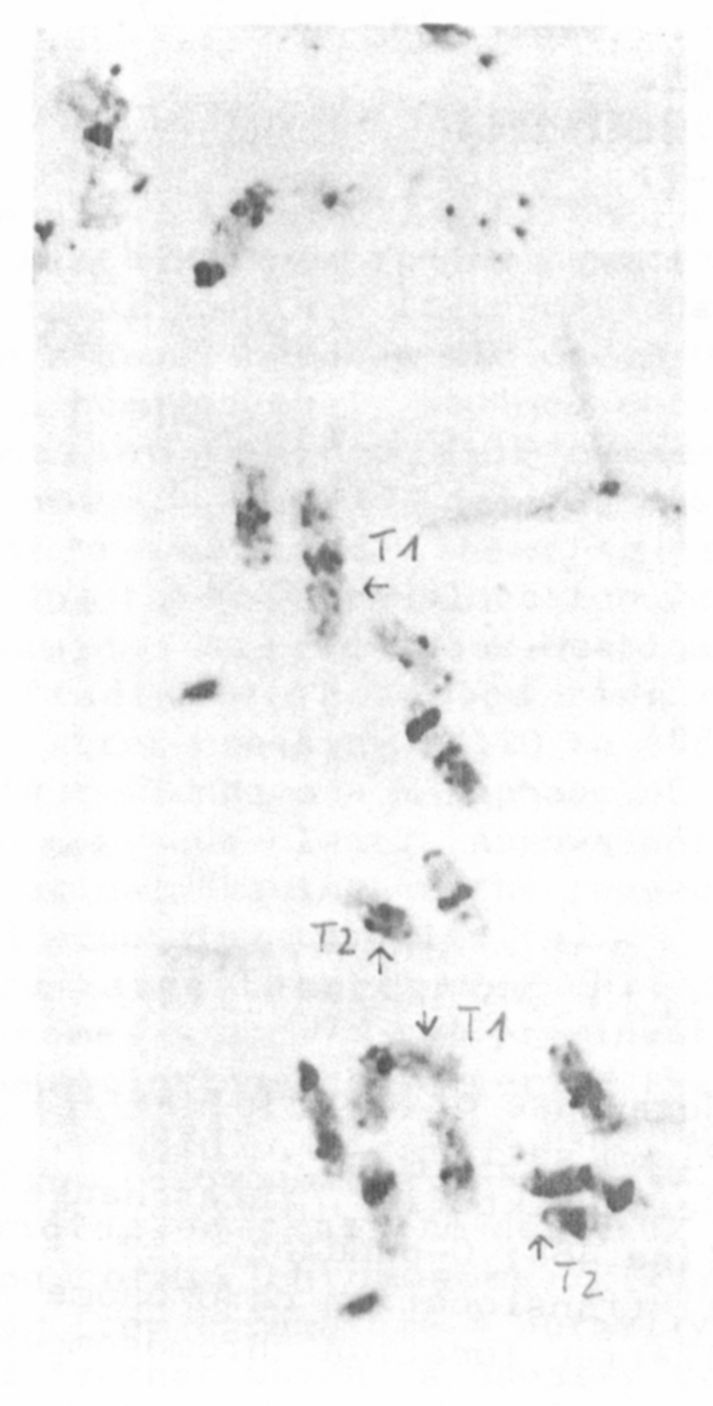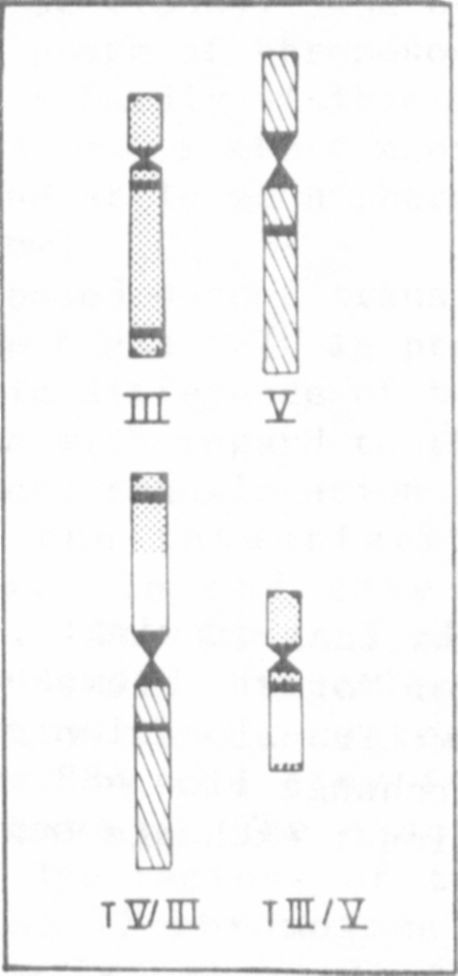TWO INTERCHANGE LINES OF PISUM SATIVUM 'DIPPKS GELBE VIKTORIA' (DGV)
STUDIED BY MEANS OF THE C-BANDING TECHNIQUE
Wolff, G. Institute of Genetics, University of Bonn
Federal Republic of Germany
In 1974, Klein (1) published his results on translocation line 488 of
DGV. In this genotype he described an interchange between choromosomes 4
and 7, resulting in a large metaphase chromosome with satellites on each
end and a small metacentric one. On the basis of measurements and calcula-
tions on homogeneously stained chromosomes the breakpoints were presumed
proximal on the p-arm of chromosome 4, and proximal on the q-arm of
chromosome 7. In 1978 Lamm (2) described the same genotype after applica-
tion of a modified C-banding technique. To that extent his results
concerning the 4/7 translocation were in accord with those of Klein. Yet,
he assumed a second translocation (2/3) in this genotype. This was based
on the finding of a second ring of four in translocation heterozygous
plants, after crossing L 110 to 488.
Figure 1 shows a metaphase of the root-tip meristem from a transloca-
tion homozygous plant. Arrows point to the T-chromosomes. Figure 2 gives
a schematical drawing of the respective chromosomes. C-banding method was
applied according to Wolff (4).
The large interchange chromosome (T1) easily can be deduced from
chromosomes 4 and 7: two prominent heterochromatic regions near the secon-
dary constrictions characterize the two ends of this chromosome (Fig. 1;
Fig. 2, below). The more prominent region derives from chromosome 7, the
other from chromosome 4. Both the arms of Tl carry intercalary bandings.
The banding on that arm deriving from chromosome 7 certainly is that also
found on normal chromosome 7 (Fig. 2, above). Yet the one on the arm
deriving from chromosome 4 normally is not found. With high certainty this
banding is that which is usually found on the short arm of chromosome 7
(Fig. 2, above). Thus, under these presuppositions, the one breakpoint
lies distal in a small region of the p-arm of chromosome 7, that of
chromosome 4 in a similar short region proximal on the q-arm (Fig. 2,
below, white sections). The short translocation chromosome (T2) is com-
posed of the p-arm of chromosome 4. The intercalary banding of this arm is
present but is hardly visible in Fig. 1. Furthermore, the centromere of
chromosome 4 and a short proximal part of the q-arm take part in this T2-
chromosome and at least a short terminal part of the p-arm of chromosome 7
(Fig. 2, below).
The proposed second translocation (2/3) (2) in this genotype so far
could not be found. It is presumed that this chromosomal deviation is the
characteristic diff erence of both the lines L 110 and DGV. A cytological
investigation with regard to this problem is in progress.
The second translocation genotype 562 was described by Muller (3).
Here, too, the investigations were done on homogeneously stained
chromosomes. In the case of 562 a 5/3 translocation is at hand
(Figs. 3,4). The large T-chromosome (Tl) is composed of the q-arm of
chromosome 5 (small intercalary banding, proximal [Fig. 4, above]), and
with certainty of the centromere of this chromosome. The second arm is
characterized by the tiny intercalary distal banding of chromosome 3
(Fig. 4, above). The exact breakpoint in this case, too, cannot he
determined. The regions of the probable positions are white in Fig. 4
(below). The T2-chromosome easily can be identified on grounds of the
typical p-arm (short arm) of chromosome 3 and the intercalary banding
adjacent to the centromere region of the q-arm (long arm) of this
chromosome (Fig.4, above); the distal part of this arm is from chromosome 5.



